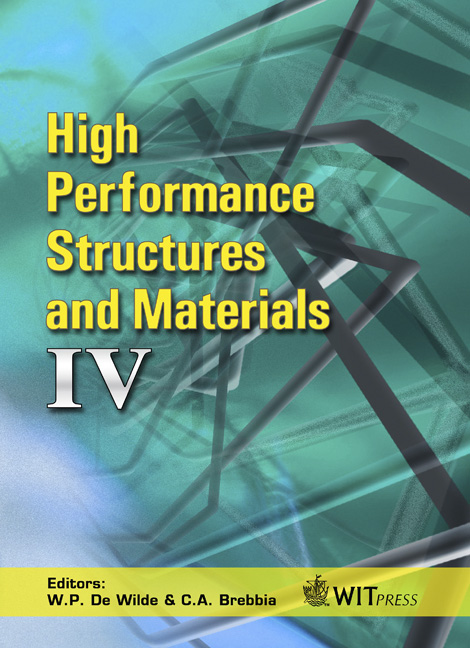Waving Behaviour Of Fatigue Stress Fluctuation In Shrink-fit Assemblies Using 3D Finite Elements
Price
Free (open access)
Transaction
Volume
97
Pages
11
Page Range
459 - 469
Published
2008
Size
2605 kb
Paper DOI
10.2495/HPSM080471
Copyright
WIT Press
Author(s)
H. N. Nguyen, V. N. Le, H. Champliaud & F. Martin
Abstract
High bearing load roller shafts are made of high performance steels as they are subjected to severe fatigue conditions, which combine a shrink-fit load and a rotating bending. Alternating stress intensity for fatigue analysis under said conditions, using elastic and maximum shear stress theories, shows a waving behaviour within a short distance near the contact edge. This discovery is observed by using structured 3D finite element models with surface-to-surface contact and element sizes varying from a coarse size far from the contact edge down to the order of sliding displacement near the contact edge. These FE models provide proof that stresses near the contact edge increase indefinitely when element size reduces. It is also found that the maximum alternating stress intensity at the depth of one ten-thousandth of the shaft diameter, using the friction coefficient of 0.01 in FE models, gives a good comparison with empirical fatigue data of classic shrink-fit assemblies for a wide range of geometry and loading. Keywords: shrink-fit, rotating bending, fatigue, alternating stress intensity, finite element, singularity, stress concentration factor. 1 Introduction Roller shafts subjected to high bearing loads, such as those supporting rotary kilns in the cement industry shown in figure 1, are usually made of high strength steels for resistance against severe fatigue loading which combines a shrink-fit load and a rotating bending [1]. The only single, widely used, formula for contact pressure between hub and shaft due shrink-fit load is Lamé’s formula, shown as formula (1) in the next section, which is analytically developed by using the elastic theory of thick
Keywords
shrink-fit, rotating bending, fatigue, alternating stress intensity, finiteelement, singularity, stress concentration factor.





